The Arafura Sea is home to the 718 Fisheries Management Area (also known as WPP-NRI 718). Here, Pelabuhan Perikanan Nusantara Tual (PPN Tual) is the Executive Coordinator responsible for the implementation of a Fisheries Management Plan (FMP/RPP) in the region. Considering the vital role the area plays in maintaining the productivity and sustainability of fishery products, strengthening institutional governance is key to realising sustainable fisheries management in 718 FMP.
For this reason, the ATSEA-2 Project, working in collaboration with PPN Tual, hosted activities entitled “Coordination of Fisheries Management Institutions for Fisheries Management Area 718”, which focused on synchronising the implementation of an Ecosystem Approach to Fisheries Management (EAFM) for red snapper, shrimp and barramundi in the Arafura Sea.
These activities were held in Langgur, Kei Kecil, Maluku from 26–28 October 2022. The main aim of the event was to socialise EAFM updates and action plan implementation in relation to those three main commodities in 718 FMA, while also identifying gaps and challenges. To improve synergy, the activities sought to re-establish commitments among 718 FMA stakeholders regarding EAFM implementation.

Over three days, a range of activities were featured, including presentations from various panellists, such as scientific experts, and central and local government officials; and a focus group discussion (FGD) to elicit ideas and forge strategies between multi-level stakeholders. At least 66 participants attended the event, representing organisations from 32 destinations. Together, they devised best practices for long-term sustainability for fisheries and socio-economic services provided by 718 FMA.
On the first day, the agenda began with remarks and presentations from Silvinus M.C Jaftoran, head of PPN Tual, regarding the role of WPP-NRI 718. Jaftoran expressed his appreciation for ATSEA-2’s support in optimising 718 FMA Institutions (LPP WPP 718) and providing this forum as a bridge between fisheries management commissions and local government, so they could understand how far each institution can contribute to fisheries in the Arafura Sea, aligned with EAFM concepts and principles. He also confirmed his hopes that this offline coordination meeting can subsequently be repeated on an annual basis, in order to enhance active participation among all stakeholders and ensure fisheries management in 718 FMA adheres to a more holistic approach.
The event continued with a presentation from James Abrahamsz from Pattimura University Ambon. Entitled ‘Learning Centre Ecosystem Approach of Fisheries Management (LC EAFM)’ this information covered red snapper, shrimp and barramundi action plan consolidation and implementation updates. He shared lessons learned from red snapper and shrimp EAFM assessments and discussed how the action plan can be implemented in Indonesia’s Aru Archipelago, by identifying and synergising related programs between local stakeholders, government and non-government organisations (NGOs).
Fery Sutyawan from Indonesia’s Ministry of Marine Affairs and Fisheries (MMAF) gave a presentation on how measured fishing policy (PIT) – or output-based control policy – could offer major leaps in fisheries management reform. There will be no more ‘Race to Fish’ concept as input control, but rather catch limit will be utilised as output control. LPP WPP-NRI expects to disseminate PIT to provincial governments, fishing ports and other stakeholders in each FMA.

On day two, activities continued with perspectives from Maluku and Papua regarding EAFM implementation in relation to the three main fisheries commodities. Robby Wanggai from the Marine and Fisheries Agency of Papua (DKP Papua) highlighted that barramundi fisheries studies have been carried out, in order to support quota-based catch and EAFM implementation. He noted that barramundi production volume reached 1,558,951 kg in 2020 in Merauke district alone, but also revealed that fishers tend to prioritise the swim bladder over the meat. He emphasised the need for further studies into barramundi swim bladder and to improve local fisher welfare, as well as reducing potential meat waste. At the same session, Dr. Amin Nasrun Renur from the Marine and Fisheries Agency of Maluku (DKP Maluku) gave a presentation on how DKP Maluku has adopted EAFM indicators in every aspect of fisheries management and incorporated the red snapper EAFM action plan for 718 FMA.
On the third day, an FGD was conducted, which successfully resulted in a mutual agreement (Berita Acara) signed by 13 participant representatives. The mutual agreement is a major step towards the establishment of the 718 Fisheries Management Plan for the next couple of years. The agreement outlined ways in which institutions can play an active role in fisheries management and governance in 718 FMA, while also scaling up multi-level stakeholder involvement in regards to policy formulation.
ATSEA-2 continues working to improve regional, national and local governance for large marine ecosystem management in the ATS region, in order to sustain provisioning, regulating and supporting ecosystem services. This latest forum is expected to support 718 FMA institutions, while also engaging marine and fisheries managers and helping them to formulate and implement measurable fisheries policies and initiatives that can ultimately help to maintain the ecological and economic balance of ecosystem services.
By Sila Kartika Sari


